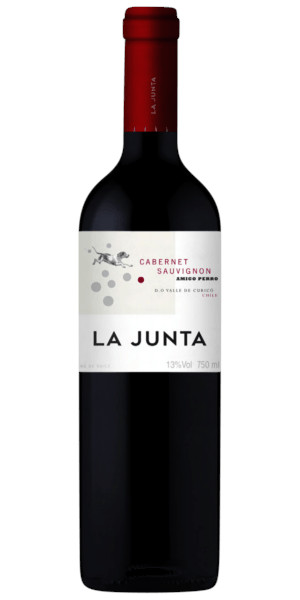La Junta Cabernet Sauvignon (750ml)
-
Wine Type
Red Wine
-
Size
750ml
-
Vintage
2022
-
Country
Chile
-
Region
Central Valley
-
Sub-Region
Curicó Valley
-
Grape
Cabernet Sauvignon
-
Farming Method
ConventionalMost products with this label come from producers who do their best to avoid any intervention at all but it’s possible that some of the aforementioned preventative measures and additions are deemed necessary. Learn More
-
ABV
13%
-
Food Pairing
Cheddar CheeseBeefBurgers
La Junta Winery is located in the Curicó Valley towards the coast, at a latitude of 35 degrees South. This valley extends from the base of the Andes Mountains to the Pacific coast. The valley is alluvial in origin, with loam-textured soils that change to deeper clay-loam nearer the coast. the semi-arid Mediterranean climate with an extended dry season and more than 700 mm (27.6 in) of precipitation per year. An excellent daytime-nighttime temperature oscillation of more than 18ºC/32ºF makes this a privileged winegrowing valley.
The enological team is headed up by Ricardo Perez-Cruz. He has over 15 years of experience in winemaking in Chile and as a technical advisor in the Aragon region of Spain. He has been actively associated with projects in various valleys of Chile, giving a comprehensive overview of winemaking features offered by each region in the country. More than a decade based in Curico valley, has given him a great & unique understanding of the terroir, sub-climates and best grapes to be grown in our valley.
Tasting Notes
Deep red color, intense nose with notes of ripe red fruit and toffee. Good structure, balanced and mature and friendly tannins. This is an easy drinking Cabernet with smooth approachable tannins and lots of juicy fruit making it easy to enjoy with range of flavours and foods; try it with grilled meats, burgers, spaghetti and meatballs, empanadas and beans.
Method
Harvest begins in the second week of April, with the grapes picked into 450 kg bins and taken to the winery. The clusters are destemmed and the berries crushed and deposited into temperature-controlled stainless steel tanks to undergo classic vinification with 2 to 4 days of pre-fermentation maceration. Alcoholic fermentation then begins, with pumpovers for 7 to 10 days at temperatures ranging from 26–28ºC. Finally, the solids are separated and one portion is racked to stainless steel tanks to preserve the full character of the fruit and another portion is aged in French oak. Conditions are then controlled to encourage malolactic fermentation and the wine is stored in temperature-controlled tanks until bottling.


Reviews